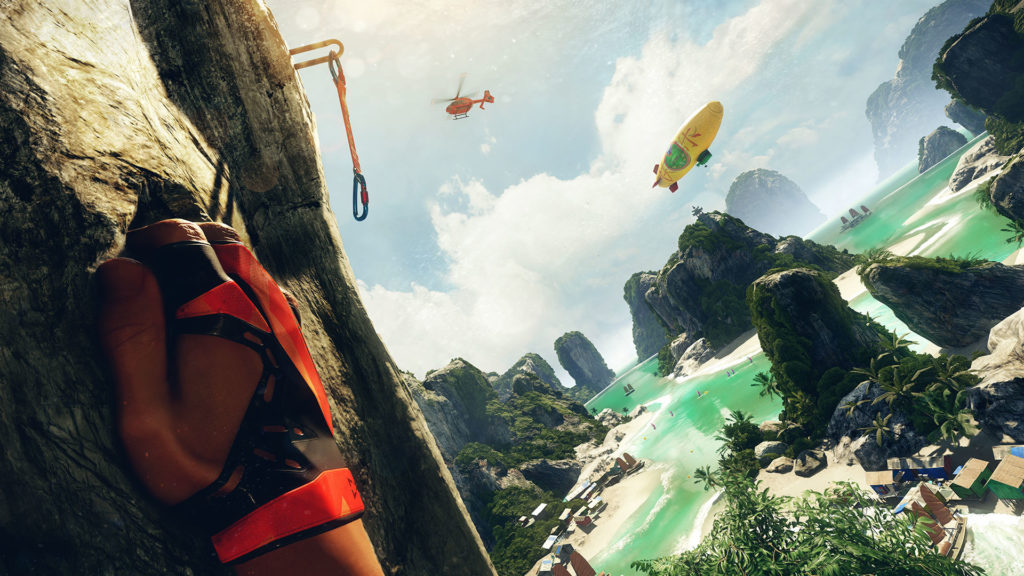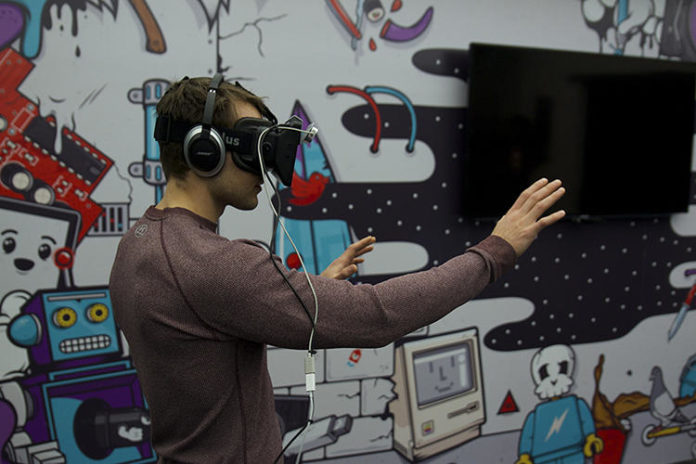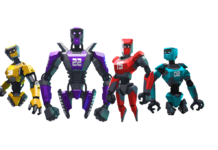VR is very immersive, and developers are only getting better at utilizing the tools available to force us into moving. In order for VR fitness to catch on, a few things need to happen. For starters, games have to be fun. They must force us to exert ourselves in ways that a traditional gym does not, and we have to want to return. Fortunately, game development has had decades to figure out how to create a compelling experience people want to return to.
That powerful and immersive brand of storytelling, available only in video games, is probably the greatest asset in VR fitness. Here are some of the ways game developers are utilizing these tools to boost physical fitness.
Visual Stimulation

Visual feedback can push us toward an objective, which is a massive motivating factor in achieving our fitness goals. Crytek’s The Climb uses visual stimuli to send many signals to the gamer:
- Give us a sense of height. We’re less apt to let go, so our arms will suspend in the air longer, creating natural resistance and building muscle.
- Show us the peak. Knowing how far we are to the top, we can conserve our strength or push harder to get to our goals.
- Provide eye candy. Part of the thrill of real mountain climbing is the view. Without that, you’re back to just working out on a rock wall (which is really cool, but not as great as a climb).
VR tricks our senses too. The way a hallway looks in VR doesn’t have to match the path you walk in real life, and developers are beginning to work around that. In Superhot, you move around within a self-contained map that is created to match the scale of the room you’re working in. There’s also redirected walking, a newer technique that allows developers to make players zig-zag in the real world to extend the distance they travel in the virtual one.
Audio Feedback
In a shooting game, audio can tell us a lot about the world around us. In VR, audio gives us feedback on the direction of gunfire (or whatever is attacking us), so we can duck or move to get out of its way. Steam already released an update to its audio platform, which came bundled with a fun little boxing app. The audio update promises to binaurally render sound, so players get a sense of the height and direction of its source.
This will only grow more important as games begin to toy with mobility. Even in a limited space, sound can force you to squat and crouch to avoid something coming towards you. Immersive audio is a powerful tool in your sense of exploration, and can reinforce visuals.
4D Effects
One of the ways Trailscape dazzled was its usage of 4D effects to simulate the shaking of a bridge. Users would walk across a set piece, with hydraulic machinery below that would gently shake or sway the bridge in the simulated wind inside the game. This powerful effect doesn’t really have a home equivalent yet, but don’t worry. Set piece VR is catching on in a big way, and 4D is probably headed your way soon.
Given that 4D is so new, it’s difficult to tell how it will fit into exercise routines but it does offer a lot of potential. 4D can create a real sense of urgency, maybe turning a casual stroll into a sudden sprint to avoid being thrown off that rickety bridge into a lava pit. That’s a lot more thrilling, and a great reason to keep enjoying the game and building up a sweat.
Difficulty and Plateaus
Another important way developers can boost fitness is with difficulty. We have already seen this at work in games like Thrill of the Fight, where you’re encouraged to learn the basics of punching and movement before tackling harder opponents that push your heart rate. Opponents also don’t go down after a paltry series of blows, and as difficulty increases, they take a bigger beating.
You literally have to exert more force if you want to win at higher difficulties, but lower difficulties allow for the burn with the sense of accomplishment that comes from beating the game.
What’s Coming
At home, we expect to see a greater emphasis in sound design that will push players to get more physical. We expect lots of magic spells, laser blasts and explosions that will force players to move and squat. In the gym, and at fitness centers, we expect a greater emphasis on 4D effects.
[youtube https://www.youtube.com/watch?v=kXsErAGOits&w=560&h=315]
You and a few friends will go to your local fitness center and have an adventure that builds with your own fitness and skill. Most likely, this will be an obstacle course utilizing cordless VR and a dedicated application built for that fitness center. At home, expect the omni treadmill to rule, with physically challenging games that play with our senses in an effort to get us to move in ways traditional workouts don’t.











